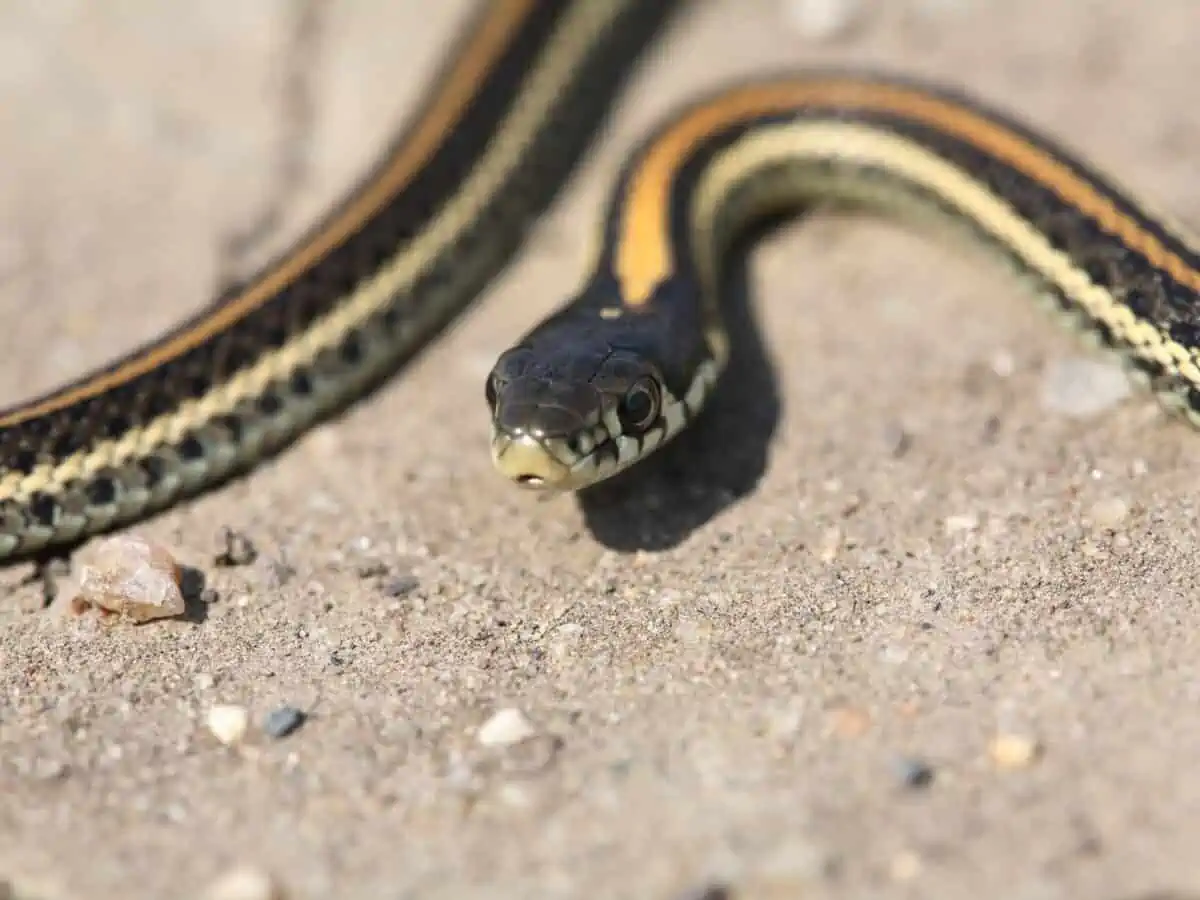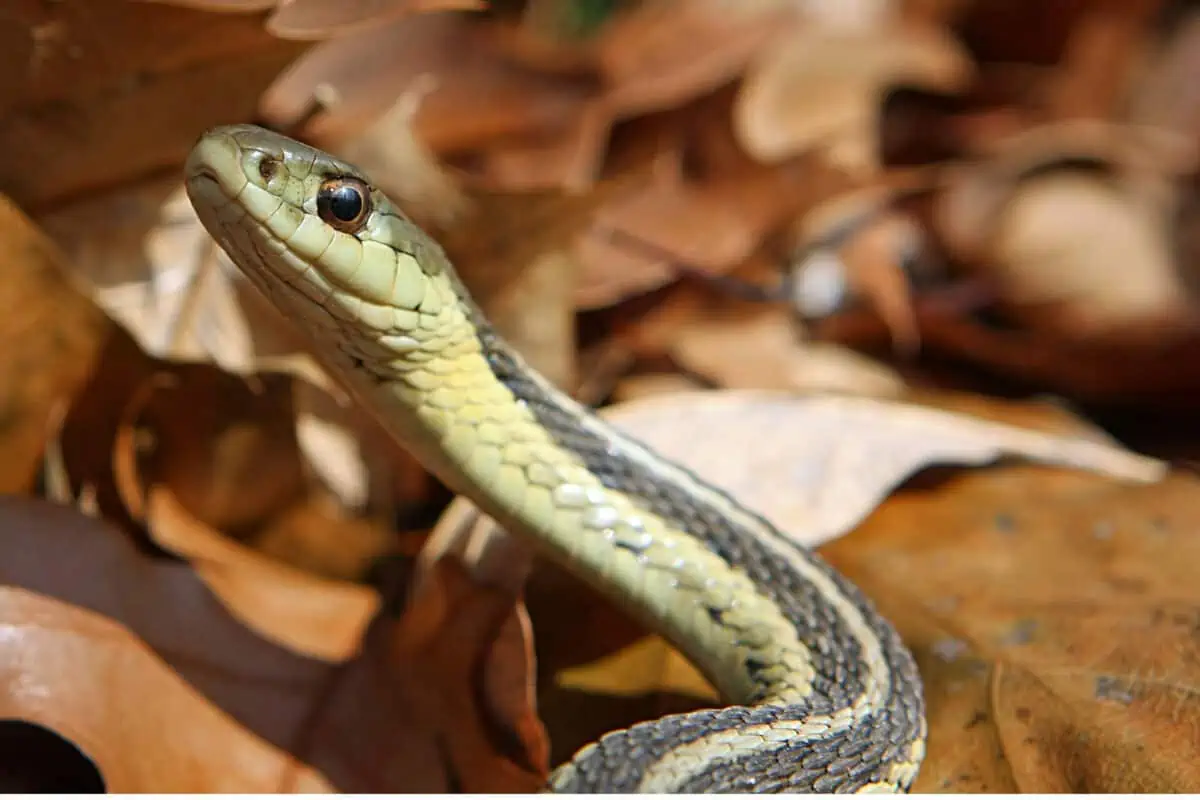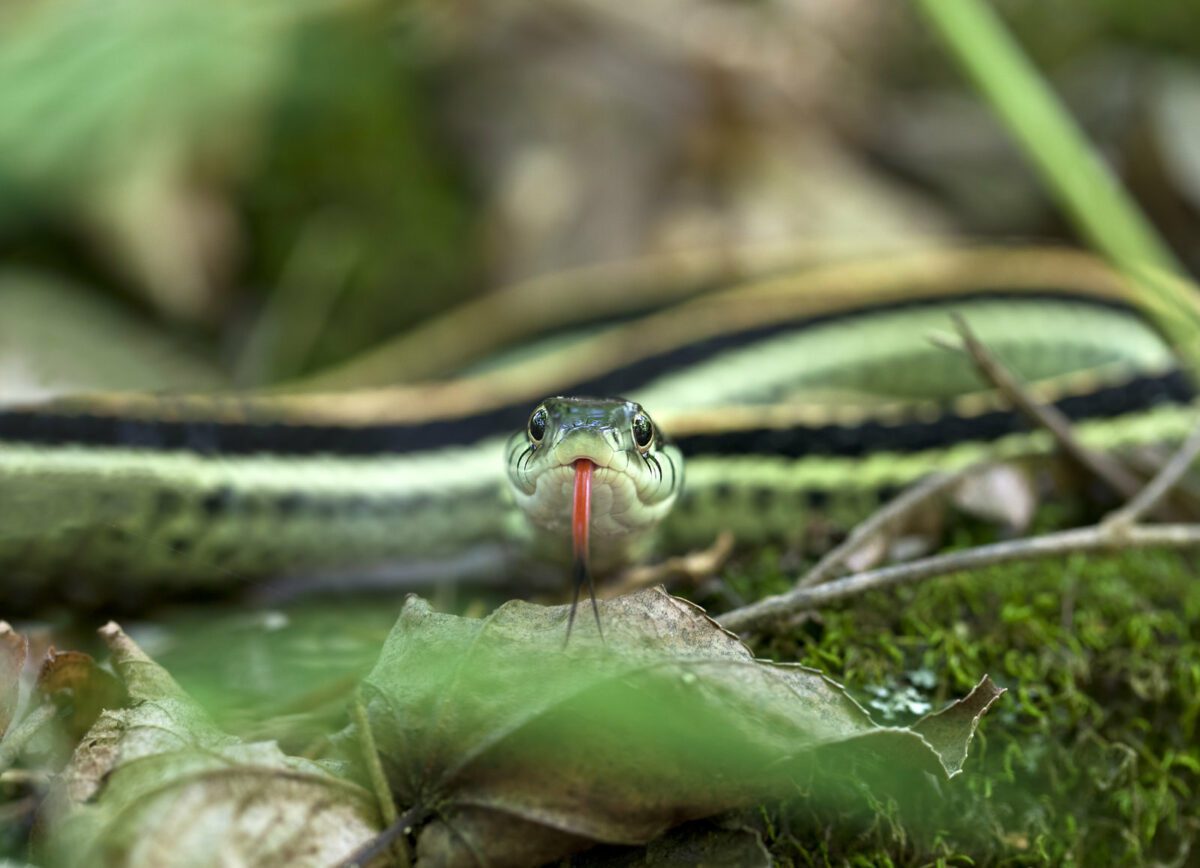Share the post "Garter Snake Texas (Species, Appearance, Behavior)"
If you look up the term “Garter snake Texas” on the internet, you’ll see that the Lone Star State is home to that fascinating creature. You may have seen one hanging out in your backyard. Garter snakes are generally harmless. They’re even considered every gardener’s best friend.
Multiple species of garter snakes can be found in Texas. They come in various colors, patterns, and lengths. Garter snakes like to stay in moist or grassy areas. They eat insects, fish, and even small birds. Their bites aren’t dangerous to humans. West Texas, South Texas, and Central Texas have large populations of garter snakes.

Garter Snakes in Texas
You might think that there’s only one type of garter snake in Texas. After all, most of them look and act the same. But in reality, there are actually several fascinating species for us to observe and discover.
Let’s get started by identifying a few Texan garter snakes.
| Name and Species | Colors and Patterns | Length |
| Black-necked Garter Snake [Thamnophis cyrtopsis] | Dark gray or olive-gray, with 2 cream side stripes and 1 yellowish center stripeHas 2 black patches on the back of its head | Ranges from 16–27 inches, 42 inches maximum |
| Checkered Garter Snake [Thamnophis marcianus] | Greenish in color, with a black checkerboard pattern | Ranges from 18–24 inches, 42 inches maximum |
| Western Ribbon Snake [Thamnophis proximus] | Black or dark brown in color, with cream or yellow side stripes and 1 orange center stripe | Ranges from 20–30 inches, 42 inches maximum |
| Plains Garter Snake [Thamnophis radix] | Brown, green, or black in color, with 3 light colored stripes | Ranges from 15–28 inches, 42 inches maximum |
As you can see, garter snakes in Texas have highly variable appearances. Their unique and diverse looks certainly make them visually attractive. You see them up close in most zoos and animal sanctuaries in Texas. Some people even keep them as pets!
Let’s learn more about a garter snake’s body parts.
Garter Snake Eyes, Nose, and Tongue
Garter snakes have excellent eyesight and a great sense of smell. They typically have big eyes and round pupils. If you see one with cloudy blue eyes, it’s most likely getting ready to shed.
It’s also worth mentioning that garter snakes have nostrils at the top of their heads. They use their nostrils for breathing, but their tongues are responsible for picking up scents.
Specifically, these snakes have two-colored tongues. The main part of their tongue is red in color, while the tip is black.
Garter Snake Skin and Body
Garter snakes possess keeled scales. This means that each scale on their body has a raised ridge. Furthermore, these lovely scales are made of keratin. It’s the same structural material found in your fingernails. Cool!
Also, have you ever seen an adult garter snake shed its skin? If yes, the process you saw is called molting. It usually happens 2–3 times a year.
Regarding length, female garter snakes often grow a foot longer than male ones. This characteristic enables them to produce and carry numerous baby snakes.

Garter Snake Behavior
There’s more to these creatures than what meets the eye. Garter snakes have lifestyles that are as colorful as their skins. First, let’s find out where they like to stay. Garter Snakes found in Texas usually favor the following environments:
- Areas near ponds, lakes, and other bodies of water
- Grassy places like woodlands, meadows, and hillsides
- Moist and warm environments such as gardens and parks
- Tight spaces under logs, rocks, and concrete structures
Garter snakes are adaptable. They thrive in many different habitats. If you want to go find some, West Texas, South Texas, and Central Texas are some regions with big populations.
Now, it’s time to explore how garter snakes go about their daily lives.
Diet
Most homeowners allow garter snakes in gardens because they act as a form of pest control. Garter snakes feed on ants, earthworms, crickets, and grasshoppers.
In the wild, these snakes can also eat fish, amphibians, rodents, and small birds.
Movement
Did you know that garter snakes do more than just wriggle on the ground? They’re capable of swimming and climbing trees too. They mostly do these activities during the daytime.
In the morning hours, you’ll see these snakes come out to warm their bodies in the sun. This is because they’re cold-blooded animals. They regulate their temperatures by switching their environment.
Hibernation
Garter snakes like to keep to themselves. But they’ll gather in large groups to hibernate from late October to early April. Some snakes even travel long distances to the same dens or burrows where they hibernate each year.
To maintain warmth, garter snakes tend to lie down together and form tight coils. Cozy!
Reproduction
Garter snakes start to mate in the spring, right after coming out of hibernation. According to Jeff Beane, a herpetologist, the reason behind this is “They are already gathered together for hibernation and don’t have to waste energy seeking mates.”
Surprisingly, garter snakes don’t lay eggs. Female snakes give birth to 20–40 baby snakes called snakelets.

Garter Snake FAQs
Are garter snakes dangerous to humans?
When you come across a garter snake, know that it’s likely shy and would rather wriggle away. However, when they feel threatened, they can still bite. Fortunately, garter snake bites aren’t dangerous to humans. They might cause some swelling or itching, though.
What’s the difference between garter snakes and garden snakes?
The answer to this question is simple — nothing! The names garter snake and garden snake both refer to the same species of snake. The second name likely came from the fact that garter snakes like to lurk in gardens. They often stay there because of the warm sunlight, moist soil, and abundance of food.
References
- Black-necked Garter Snake Color and Length: in.nau.edu
- Checkered Garter Snake Color and Length: inaturalist.org
- Western Ribbon Snake Color and Length: dnr.wi.gov
- Plains Garter Snake Color and Length: dnr.state.mn.us
- Garter snakes give birth to 20–40 snakelets: youtube.com
Share the post "Garter Snake Texas (Species, Appearance, Behavior)"
Christian Linden is a seasoned writer and contributor at Texas View, specializing in topics that resonate with the Texan community. With over a decade of experience in journalism, Christian brings a wealth of knowledge in local politics, culture, and lifestyle. He holds a Bachelor's degree in Communications from the University of Texas. When he's not writing, Christian enjoys spending weekends traveling across Texas with his family, exploring everything from bustling cities to serene landscapes.











